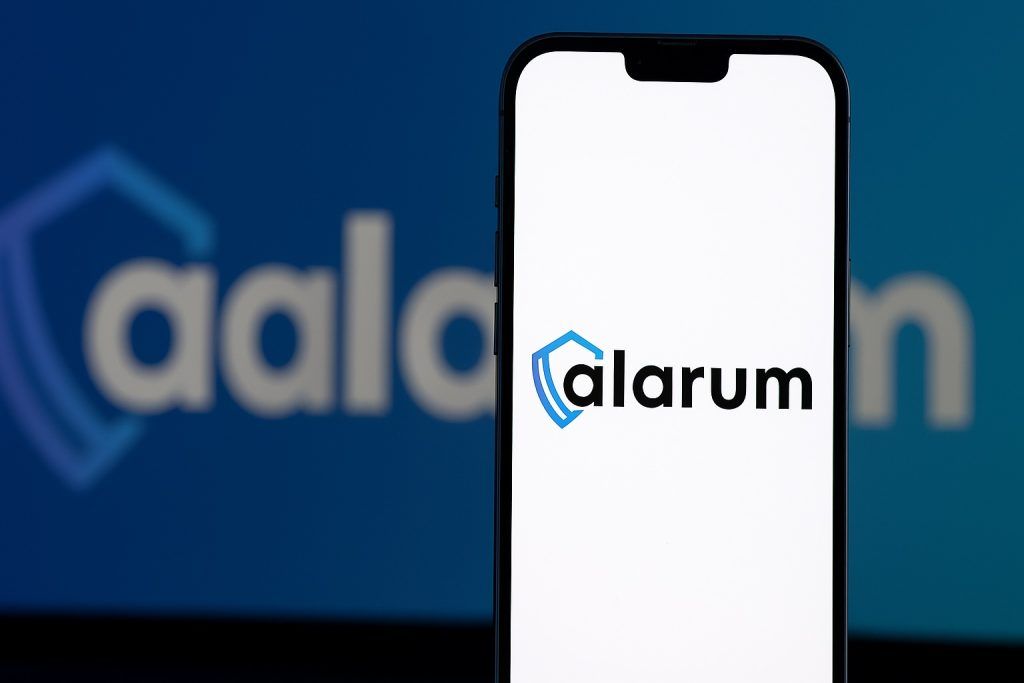Key Facts: Rivian’s stock (NASDAQ: RIVN) closed around $13 on Nov. 4, 2025 (52-week range ~$9.50–$17.15 [1]), giving it a market cap of about $15.2 billion [2]. In Q3 2025 Rivian delivered 13,201 vehicles (highest quarter of 2025) and reported $1.558 billion in revenue, up 78% year-over-year [3]. Adjusted gross profit turned positive ($24 M) for the quarter [4]. Management kept 2025 delivery guidance at 41,500–43,500 vehicles [5] (midpoint cut vs. prior); losing the $7,500 federal EV tax credit caused a short-term pull-forward of orders, then softer demand [6] [7]. Rivian announced a 600‑job layoff (4.5%) on Oct. 23 to cut costs [8]. CEO RJ Scaringe said the company is on track to start production of its new R2 mid‑size SUV (target ~$45K base) in H1 2026 [9] [10]. Analysts currently have a “Hold/Reduce” consensus on RIVN, with an average 12‑month target near $13–14 (upside ~5–10%) [11] [12]. Wall Street price targets range from about $10 (Sell) to $21 (Buy) [13] [14], reflecting wide views on Rivian’s outlook.
Recent Stock Performance
Rivian shares have been volatile amid mixed news. In late October the stock traded around ~$13.50. On Nov. 4 it closed at $12.50 (down ~5.2% on the day) [15], but surged about 3% in after-hours trading after the Q3 report [16] [17]. Year-to-date (Nov. 4) RIVN is modestly positive. Over the past 12 months the stock has ranged roughly $9.50–$17.15 [18]. Its trading volume has been high (~50–55 million shares in early Nov. trading [19]). Key metrics: market cap ~$15.2B, trailing revenue ~$5.2B, negative net income (~-$3.5B annual) [20], no P/E ratio. The 50-day moving average (~$13.4) and 200-day average (~$13.3) suggest resistance around current levels.
| Date | Open | High | Low | Close | Volume | % Change |
|---|---|---|---|---|---|---|
| Oct 30, 2025 | 12.99 | 13.55 | 12.99 | 13.58 | 39.85M | +4.4% |
| Oct 31, 2025 | 13.57 | 13.57 | 12.90 | 13.57 | 53.69M | +4.5% |
| Nov 3, 2025 | 13.19 | 13.55 | 13.15 | 13.59 | 38.77M | -2.8% |
| Nov 4, 2025 | 12.50 | 12.96 | 12.40 | 12.98 | 49.35M | -5.2% |
Table: RIVN stock price (NASDAQ) in late Oct–early Nov 2025 (values in USD)
Recent News & Developments (Late Oct 2025)
- Q3 Earnings Beat (Nov 4): Rivian surprised with strong Q3 results. Deliveries of 13,201 vehicles were up 32% year-over-year [21]. Consolidated revenue rose 78% to $1.56 billion (vs. $1.5B estimate) [22] [23]. Vehicle revenue climbed 47% to $1.142B; software & services (after VW JV) surged 324% to $416M [24]. Consolidated gross profit turned slightly positive ($24M, vs. –$392M year-ago) [25]. Adjusted EPS was –$0.65, beating the –$0.72 consensus [26]. The company reiterated full-year deliveries of 41,500–43,500 (midpoint 42,500) [27], reflecting a modest cut from prior guidance to account for post-incentive demand uncertainty. CEO Scaringe noted the recent surge was likely pulled-forward by the expiring credit, commenting: “October is going to be a bit of a funky month… in the fullness of time, we think [demand] looks the same way we thought it looked before” [28]. He also said R2 production remains on track for H1 2026 [29]. Rivian held an investor webcast Nov. 4 (transcript available on IR site) to discuss results; see the official press release [30].
- Layoffs and Restructuring: On Oct. 23 Rivian announced it would cut ~600 jobs (4.5% of staff) [31]. CEO Scaringe wrote in an internal memo that the move – affecting mostly sales, marketing and service roles – was needed due to “a changing operating backdrop”: loss of the EV credit and new U.S. tariffs were cited. Scaringe also is taking on interim CMO duties to oversee launch of the R2 SUV [32] [33]. TechCrunch reported that Scaringe told employees it was “a very difficult decision” but necessary as Rivian braces for R2 and the end of credits [34]. Industry watchers note this was Rivian’s third round of cuts in 2025, reflecting tighter belt amid continued losses.
- EV Tax Credit Expiry: On Oct. 1 the $7,500 federal clean-vehicle tax credit expired (per Trump’s legislation), sparking a rush of EV purchases in Q3 [35] [36]. Reuters and others reported that U.S. consumers accelerated Rivian (and Tesla) buys to beat the deadline [37] [38]. Ford noted its EV sales plunged ~25% in October to ~4,700 vehicles after the credit ended [39]. Analysts warn Q4 demand may falter due to higher effective prices, and “EV manufacturers are being forced to finally make more affordable electric cars,” as Rivian’s CFO hinted [40] [41]. (Separately, on Oct. 17 the administration enacted new U.S. production tax credits and tariffs on heavy trucks [42]; these broad auto policies may indirectly affect costs for Rivian.)
- Amazon Partnerships: Rivian’s longtime partner Amazon (a major investor) unveiled two developments. On Oct. 30 Rivian/Teslarati reported that the first 50 Amazon delivery vans (EDVs) built by Rivian began service in Vancouver, marking the EDV’s launch in Canada [43]. Amazon’s delivery fleet had already grown to 30,000 EDVs in the U.S. by mid-2025 [44]. On Oct. 22 TechCrunch reported Amazon will buy “thousands” of electric cargo bikes from Rivian spin-off Also [45]. RJ Scaringe emphasized the tight “no guesswork” coordination between Rivian and Amazon on these projects [46]. These moves underscore Rivian’s expanding mobility portfolio (Amazon has ordered 100,000 EDVs) and its strategic alliance with Amazon.
- Product Updates: Rivian continues to ready its next model, the R2 SUV (mid-size, ~$45K base). The Q3 press release noted the R2 assembly line is largely complete and production validation is set to begin by year-end [47]. Rivian’s updated guidance assumes R2 launch in first half 2026 [48] [49]. In software, Rivian added new OTA features (smart charging, “Halloween mode” theme) in Oct. 2025 [50] and is building out its Adventure Network and dealer/service network nationwide [51].
Analyst Commentary & Expert Views
Analysts are divided on Rivian’s near-term outlook. Ahead of the Q3 report, Vijay Rakesh of Mizuho warned that “subdued 2026 EV sales outlook” (after the credit loss) justified a bearish stance, cutting his delivery forecast to 60,000 units and lowering his 12-month target to $10 (Sell) [52]. JPMorgan’s Ryan Brinkman likewise reiterated a Sell, upping his target only from $9 to $10, citing weak demand [53]. The TipRanks AI-driven model also sounded cautious: it gave RIVN a Neutral rating with target $13.50, noting “negative margins and high leverage” as key headwinds [54]. These analysts emphasized that Rivian’s high average selling price (~$70K) and tax-credit removal mean deliveries may stall until the more affordable R2 arrives [55].
On the other hand, some analysts have higher targets. Goldman Sachs lifted its Rivian target from $12 to $15 (Neutral) on Sep. 29 [56], arguing recent progress (e.g. cost cuts) could justify modest upside. Canaccord Genuity had a Buy rating with a $21 target earlier, and Wedbush (as of Aug) cited an Outperform rating at $16 [57]. In aggregate, 26 analysts (MarketBeat) average a Hold consensus with mean target ~$13.76 [58]. MarketBeat notes 5 Buys, 15 Holds, 6 Sells among analysts [59].
Financial media reactions highlight both excitement and caution. Reuters noted Rivian “tops revenue expectations” on Q3 deliveries [60] [61]. The Wall Street Journal (via stockanalysis.com) emphasized that Rivian achieved its second quarterly gross profit of 2025 [62]. CNBC and Bloomberg (not freely cited here) similarly praised the revenue beat and narrowing losses. But cautionary voices – including the Business Insider and TechCrunch coverage of the Oct. 23 memo – underscore Rivian’s scaling pains. As one analyst put it, the EV tax credit cut “means manufacturers are being forced to finally make more affordable electric cars” [63], a veiled reference to Rivian’s need to pivot pricing. Overall, experts note that R2’s success (targeting Tesla Model Y territory) will be crucial, and that regulatory credits are currently bolstering Rivian’s income: software/services gross profit was $154M vs. a $130M loss in automotive [64].
Analyst Forecasts (Price Targets)
| Analyst / Source | Rating | Price Target | Notes / Sources |
|---|---|---|---|
| Mizuho (V. Rakesh) | Sell | $10 | cites “subdued” demand post-incentive [65] |
| JPMorgan (R. Brinkman) | Sell | $10 | reiterated Sell, slightly raising PT [66] |
| Goldman Sachs | Neutral | $15 | raised PT to $15 [67] |
| TipRanks AI Model | Neutral | $13.50 | notes “negative margins” headwinds [68] |
| Market Consensus | Hold (avg.) | $13.76 | average of 26 analysts [69] |
Table: Selected 12-month price targets for Rivian as of Nov 2025 (sources cited). Current share price ~$12.50.
Future Outlook & Forecasts
Most analysts see Rivian’s future hinging on cost cuts and R2. In-depth forecasts project that Rivian can reach profitability in the latter half of the decade by scaling production. For example, one analysis outlines a plan to achieve positive adjusted EBITDA by 2027, with targets of ~25% gross margin, high-teens EBITDA margin and ~10% free-cash-flow margin long-term [70]. Key cost-savings drivers include Rivian’s Gen 2 platform: material costs should drop ~20% from current R1 levels [71] as new models ramp. Rivian also expects over $200 million in regulatory-credit revenue in 2025 to cushion losses [72]. The company has guided to ~$1.8–1.9 billion in 2025 capex, largely for R2 line and new Georgia plant [73].
Wall Street’s near-term revenue forecasts have been revised upwards: TipRanks notes consensus Q3 revenue was ~$1.51B (actual $1.56B) [74] [75]. Analysts expect 2025 total revenue of roughly $5.3B (implying ~42k deliveries at current ASPs). Long-term, some bull scenarios envision R2’s arrival sparking a volume ramp: 247WallSt projects as many as 57,000 vehicles in 2024 (likely outdated) and multi-fold sales growth into 2030 [76]. One model cited a 2030 upside price target of ~$44 (over 200% from current) based on aggressive adoption [77] – though such projections assume best-case execution. In any case, analysts caution that if Rivian hits its 2025 goal (~42k deliveries) and controls costs, its valuation (~3x sales) could be justified as a growth EV stock [78].
Rivian vs. Competitors
Tesla (TSLA) – The clear EV leader, Tesla’s scale dwarfs Rivian. Tesla still delivers on the order of 70–80 thousand vehicles per quarter (even after a recent ~13% dip) [79]. Its market cap is hundreds of billions, whereas Rivian’s is ~$15B [80]. Tesla’s first-mover brand power gives it pricing premium. By contrast, Rivian remains early-stage: industry analysts note Rivian trades at <3× sales, far below Tesla’s early-stage ~10× [81]. Tesla’s Model Y (mid-size SUV) is a chief rival – R2 is explicitly aimed at that segment [82]. Tesla also offers cheaper models (Model 3), which Rivian lacks. As EV credit support has ended, Tesla’s lower pricing and options (incl. used Teslas) pose stiff competition to Rivian’s premium offerings.
Ford (F) – The legacy automaker has pivoted cautiously. Ford’s EV truck (F-150 Lightning) competes loosely with Rivian’s R1T pickup, but Ford’s EV sales are still small: Ford sold ~4,700 EVs in October 2025 (down 25% y/y) [83]. Ford as a whole sold ~175,000 vehicles that month (mostly gas), underscoring Rivian’s unique EV-only focus. Ford’s market cap (~$70B) and revenue far exceed Rivian’s, but Ford suffers from mix (ICE vs EV) and tariff costs [84]. Some analysts argue Rivian, being pure-EV, should do better in demand; others point out Ford’s established dealer and supply chain gives it resilience. Overall, Ford’s near-term EV struggles highlight that Rivian’s challenges (costs, incentives) are shared across the industry.
Lucid Group (LCID) – A fellow EV start-up targeting luxury sedans/SUVs. Lucid’s volumes are even smaller: Q2 2025 deliveries were ~3,309 vehicles [85], vs Rivian’s 13,201. Lucid’s latest model, the Gravity SUV, is a rival at the high end of R2’s future segment. However, Lucid has burned cash while scaling and trades at <$5B market cap. Investors often compare Lucid and Rivian as joint “EV underdogs.” Both lack earnings and face cash burn, but Rivian has a much broader product line (trucks + SUVs + Amazon vans) and an upcoming mass-market model (R2) that Lucid lacks. Some analysts view Rivian as better positioned to tap mainstream demand, though others note Lucid’s Saudi backing cushions its runway (at least temporarily).
In summary, Rivian’s recent Q3 beat and high demand pre-credit expiry are positives, but looming challenges (expensive vehicles, loss of subsidies, heavy tariffs) temper enthusiasm. Experts emphasize watching the R2 launch and cost-cutting progress: success there could validate Rivian’s lofty production targets and justify a higher valuation. For now, the stock trades on a mix of near-term execution and long-term promise – make-or-break questions that analysts and investors are debating as of Nov. 2025.
Sources: Rivian’s official Q3 2025 press release [86]; auto-industry news (Reuters, WSJ, CNBC) [87] [88] [89]; analyst research via TipRanks and MarketBeat [90] [91] [92]; financial press (TechCrunch, Teslarati, 24/7 Wall St.) [93] [94] [95]. All data are as of market close Nov. 4, 2025.
References
1. stockanalysis.com, 2. stockanalysis.com, 3. www.businesswire.com, 4. www.businesswire.com, 5. www.businesswire.com, 6. www.reuters.com, 7. www.reuters.com, 8. www.reuters.com, 9. www.businesswire.com, 10. www.techbuzz.ai, 11. www.marketbeat.com, 12. www.marketbeat.com, 13. www.marketbeat.com, 14. www.marketbeat.com, 15. www.marketbeat.com, 16. www.reuters.com, 17. www.marketbeat.com, 18. stockanalysis.com, 19. www.investing.com, 20. stockanalysis.com, 21. www.reuters.com, 22. www.businesswire.com, 23. www.reuters.com, 24. www.businesswire.com, 25. www.businesswire.com, 26. www.reuters.com, 27. www.reuters.com, 28. www.reuters.com, 29. www.reuters.com, 30. www.businesswire.com, 31. www.reuters.com, 32. www.techbuzz.ai, 33. www.techbuzz.ai, 34. www.techbuzz.ai, 35. www.reuters.com, 36. www.reuters.com, 37. www.reuters.com, 38. www.reuters.com, 39. www.reuters.com, 40. www.reuters.com, 41. www.reuters.com, 42. www.reuters.com, 43. www.teslarati.com, 44. www.teslarati.com, 45. techcrunch.com, 46. techcrunch.com, 47. www.businesswire.com, 48. www.businesswire.com, 49. www.reuters.com, 50. www.businesswire.com, 51. www.businesswire.com, 52. www.tipranks.com, 53. www.tipranks.com, 54. www.tipranks.com, 55. www.tipranks.com, 56. www.marketbeat.com, 57. www.marketbeat.com, 58. www.marketbeat.com, 59. www.marketbeat.com, 60. www.reuters.com, 61. www.reuters.com, 62. stockanalysis.com, 63. www.techbuzz.ai, 64. www.businesswire.com, 65. www.tipranks.com, 66. www.tipranks.com, 67. www.marketbeat.com, 68. www.tipranks.com, 69. www.marketbeat.com, 70. 247wallst.com, 71. 247wallst.com, 72. 247wallst.com, 73. www.businesswire.com, 74. www.tipranks.com, 75. www.reuters.com, 76. 247wallst.com, 77. 247wallst.com, 78. 247wallst.com, 79. www.reuters.com, 80. stockanalysis.com, 81. 247wallst.com, 82. www.techbuzz.ai, 83. www.reuters.com, 84. www.reuters.com, 85. www.reuters.com, 86. www.businesswire.com, 87. www.reuters.com, 88. www.reuters.com, 89. www.reuters.com, 90. www.tipranks.com, 91. www.marketbeat.com, 92. www.marketbeat.com, 93. techcrunch.com, 94. www.teslarati.com, 95. 247wallst.com







